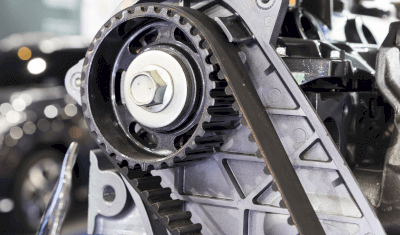What Is a Timing Belt?

A timing belt, or toothed belt, is an essential component in automobile engines, designed to synchronize the movement of the pistons and valves. Made from elastic materials like polyurethane or nitrile rubber, often reinforced with glass fiber or aramid fiber, timing belts ensure precise transmission of drive without slippage by engaging with the teeth of pulleys.
Uses of Timing Belts
- Synchronization of Pistons and Valves: By linking the crankshaft and camshaft, timing belts maintain the correct timing for air and fuel mixing and burning in the combustion chamber, preventing potential engine damage from piston and valve collisions.
- Driving the Water Pump: Timing belts also play a crucial role in engine cooling by driving the water pump, facilitating coolant circulation.
Principle of Timing Belts
- Crankshaft: Converts the pistons’ up-and-down motion into rotational force, driving the timing belt.
- Timing Belt: Connects to the camshaft and water pump, rotating them with a precise 2:1 crankshaft to camshaft rotation ratio.
- Camshaft: Uses cams to open and close the intake and exhaust valves in sync with the piston movements.
- Water Pump: Circulated engine coolant, driven by the timing belt’s rotation.
Other Information on Timing Belts
When to Replace the Timing Belt
For optimal engine performance and safety, timing belts should be replaced based on:
- Mileage: Generally recommended every 100,000 to 150,000 km, depending on the vehicle.
- Years of Use: Typically, every 5 to 7 years, due to material degradation over time.
- Conditions of Use: Environmental factors like temperature and humidity can accelerate wear and tear.
Regular maintenance and timely replacement of the timing belt are crucial to preventing engine damage and ensuring vehicle safety.